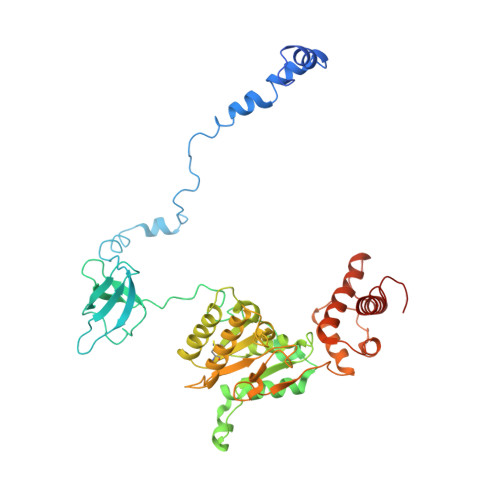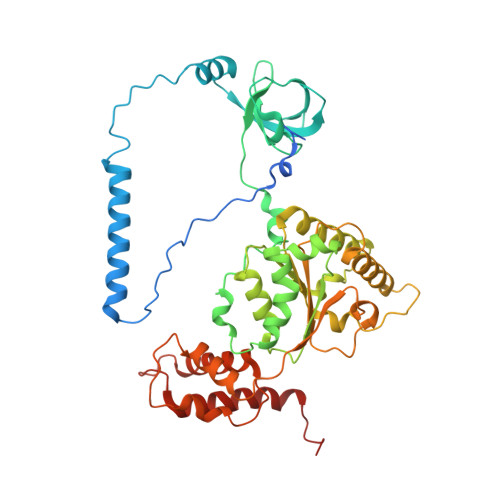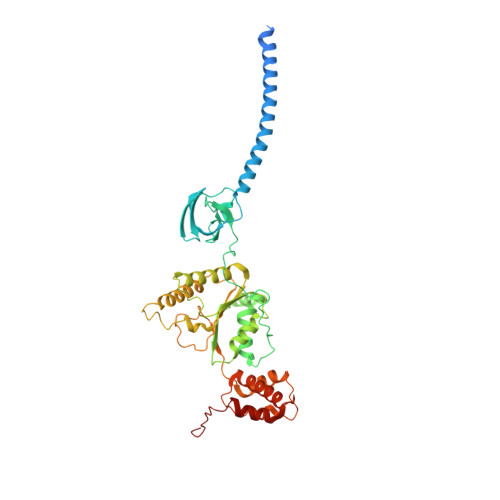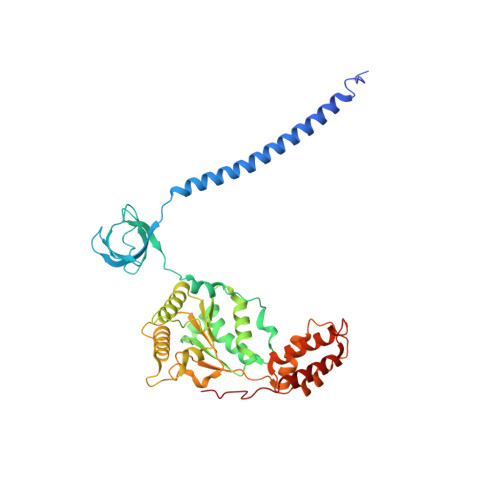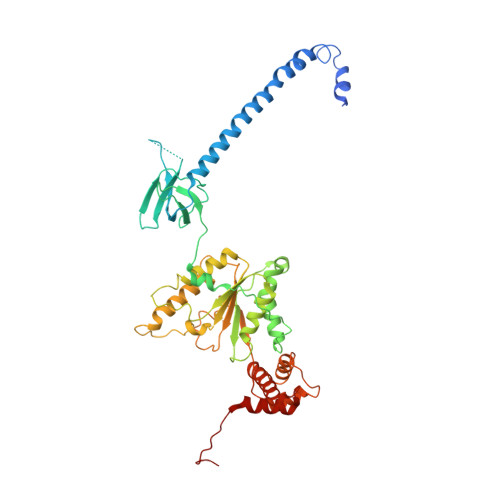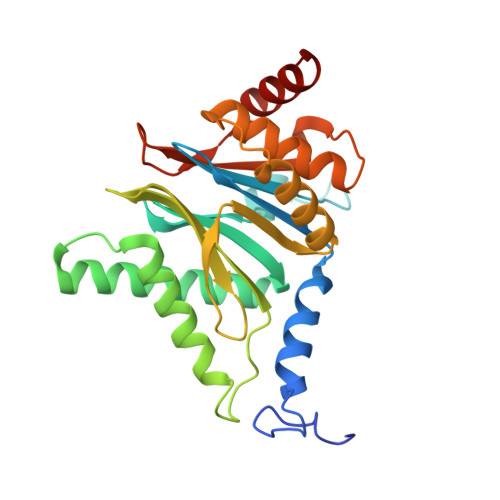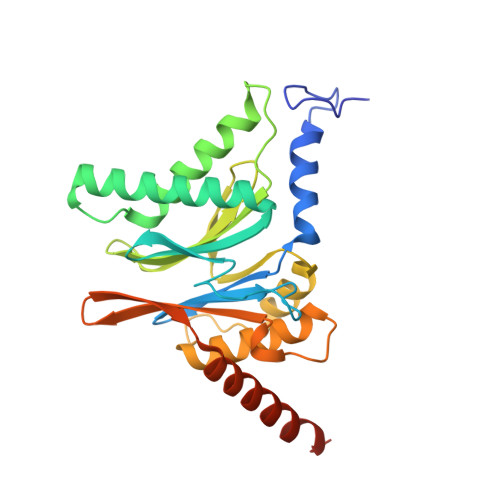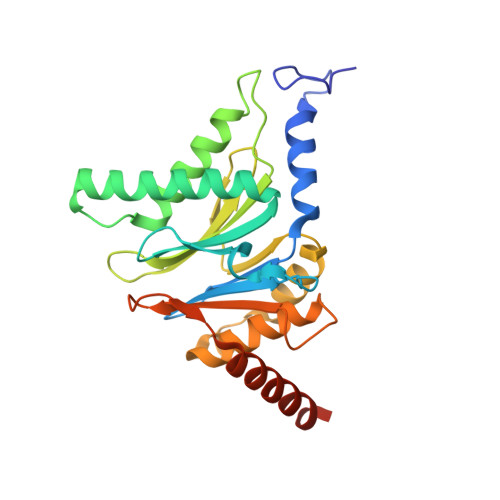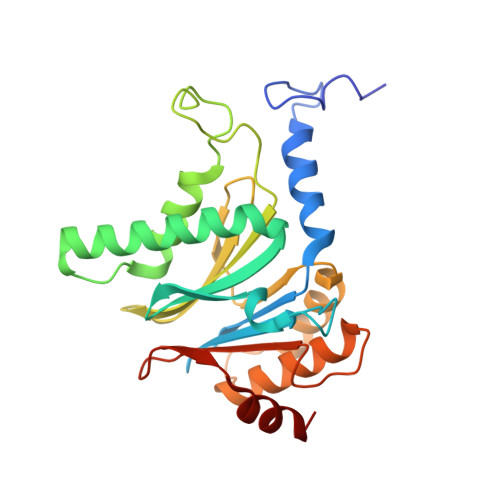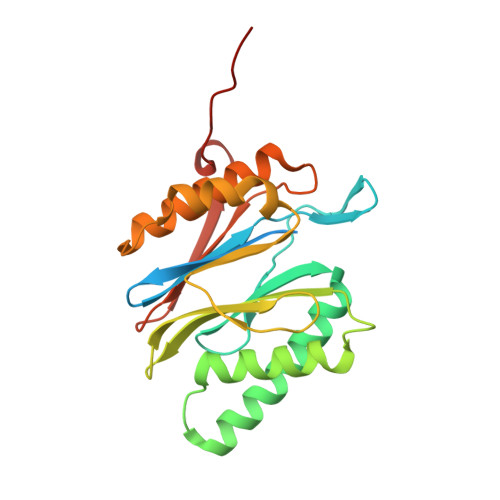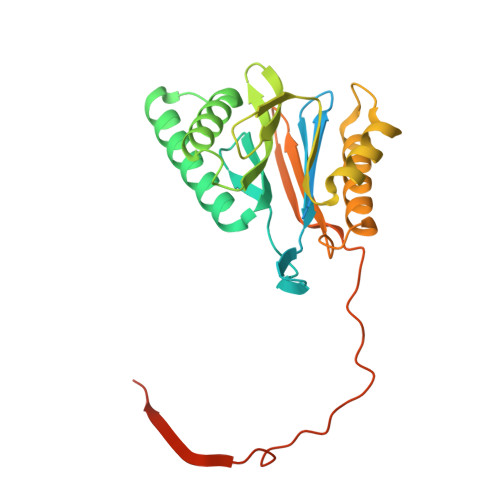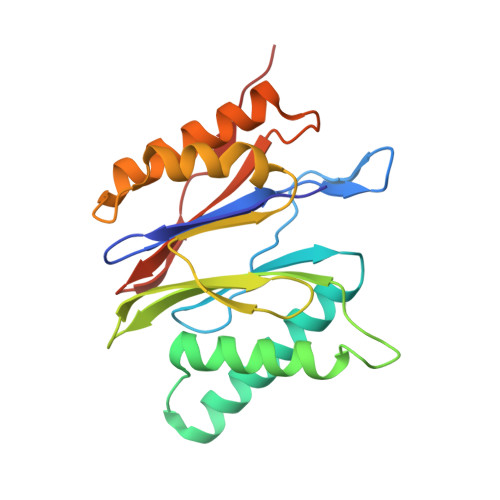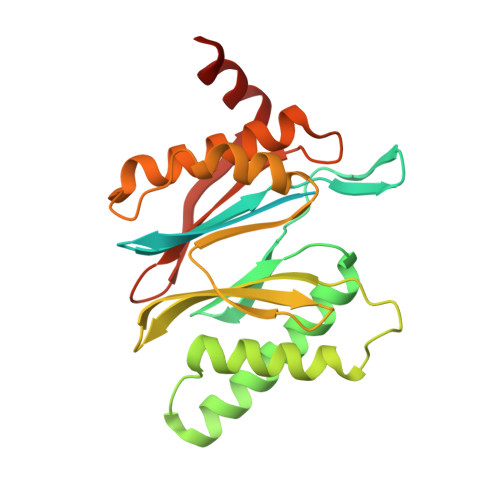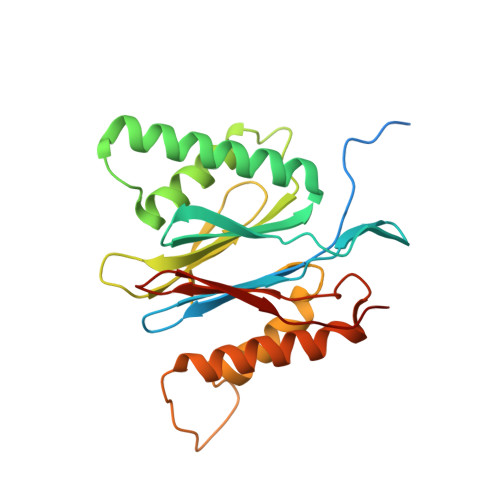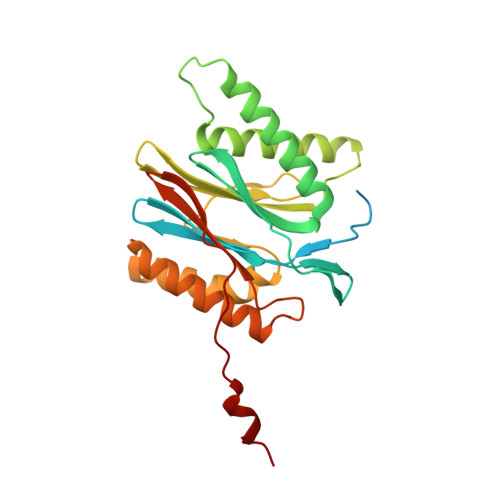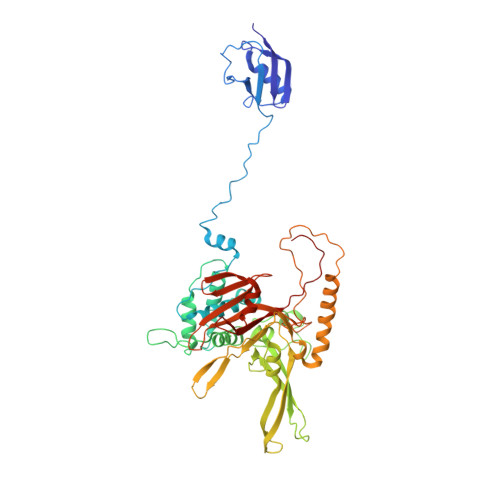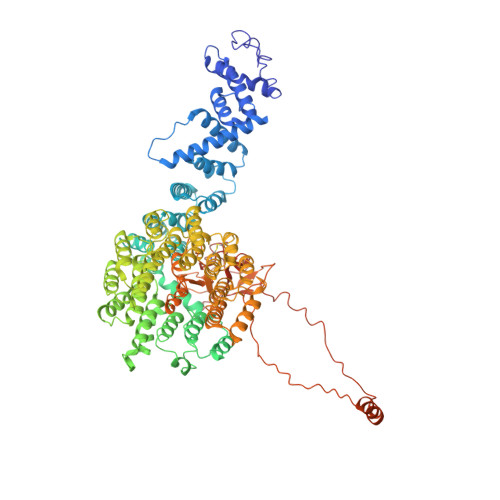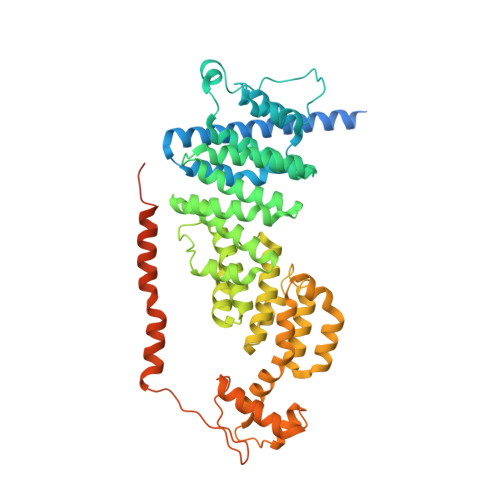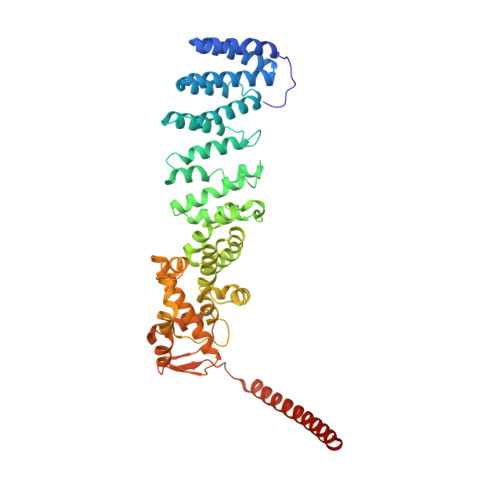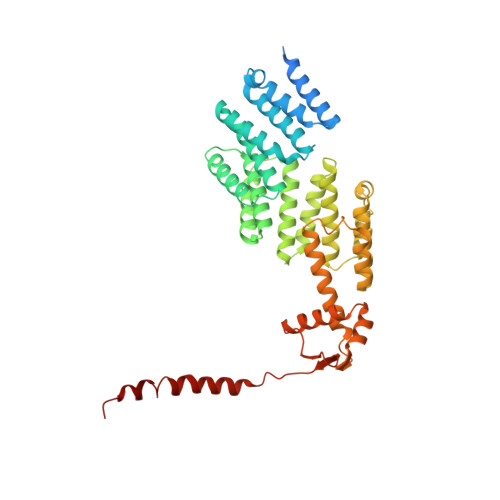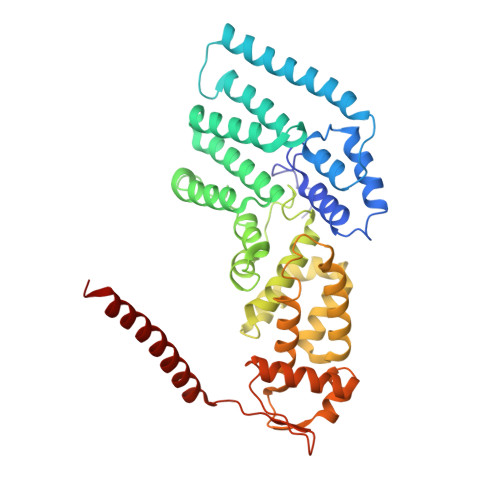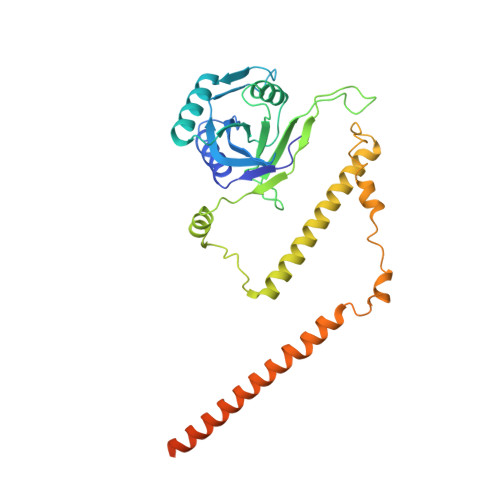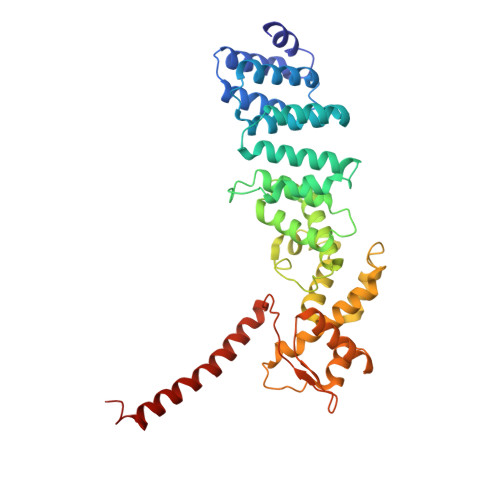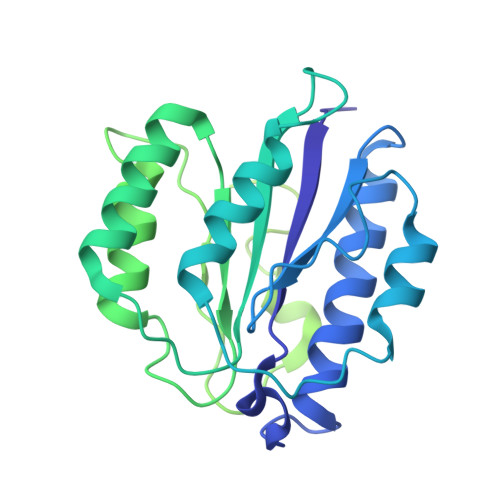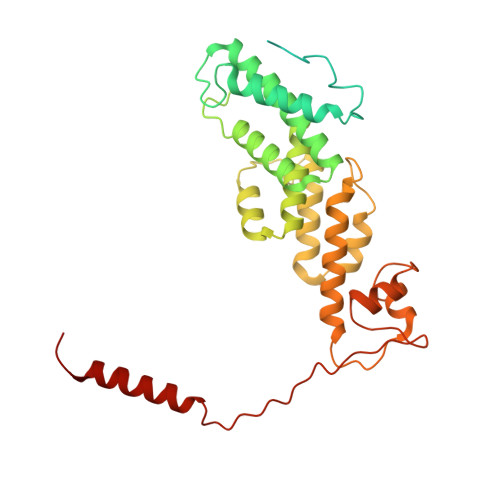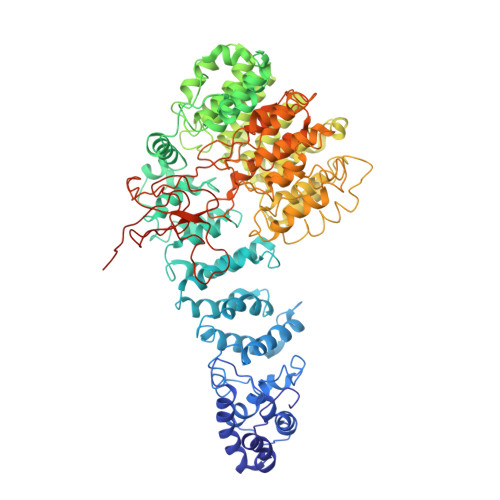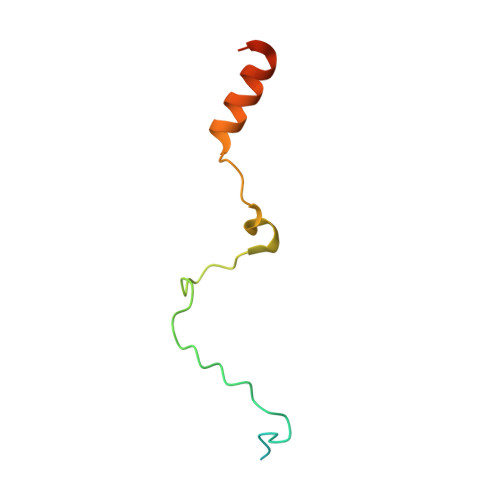USP14-regulated allostery of the human proteasome by time-resolved cryo-EM.
Zhang, S., Zou, S., Yin, D., Zhao, L., Finley, D., Wu, Z., Mao, Y.(2022) Nature 605: 567-574
- PubMed: 35477760
- DOI: https://doi.org/10.1038/s41586-022-04671-8
- Primary Citation of Related Structures:
7W37, 7W38, 7W39, 7W3A, 7W3B, 7W3C, 7W3F, 7W3G, 7W3H, 7W3I, 7W3J, 7W3K, 7W3M - PubMed Abstract:
Proteasomal degradation of ubiquitylated proteins is tightly regulated at multiple levels 1-3 . A primary regulatory checkpoint is the removal of ubiquitin chains from substrates by the deubiquitylating enzyme ubiquitin-specific protease 14 (USP14), which reversibly binds the proteasome and confers the ability to edit and reject substrates. How USP14 is activated and regulates proteasome function remain unknown 4-7 . Here we present high-resolution cryo-electron microscopy structures of human USP14 in complex with the 26S proteasome in 13 distinct conformational states captured during degradation of polyubiquitylated proteins. Time-resolved cryo-electron microscopy analysis of the conformational continuum revealed two parallel pathways of proteasome state transitions induced by USP14, and captured transient conversion of substrate-engaged intermediates into substrate-inhibited intermediates. On the substrate-engaged pathway, ubiquitin-dependent activation of USP14 allosterically reprograms the conformational landscape of the AAA-ATPase motor and stimulates opening of the core particle gate 8-10 , enabling observation of a near-complete cycle of asymmetric ATP hydrolysis around the ATPase ring during processive substrate unfolding. Dynamic USP14-ATPase interactions decouple the ATPase activity from RPN11-catalysed deubiquitylation 11-13 and kinetically introduce three regulatory checkpoints on the proteasome, at the steps of ubiquitin recognition, substrate translocation initiation and ubiquitin chain recycling. These findings provide insights into the complete functional cycle of the USP14-regulated proteasome and establish mechanistic foundations for the discovery of USP14-targeted therapies.
- State Key Laboratory for Artificial Microstructures and Mesoscopic Physics, School of Physics, Peking University, Beijing, China.
Organizational Affiliation:








